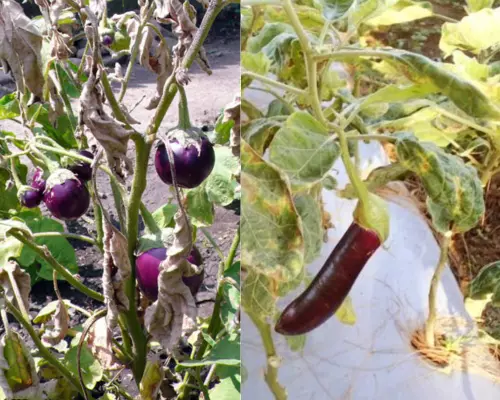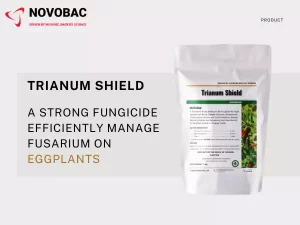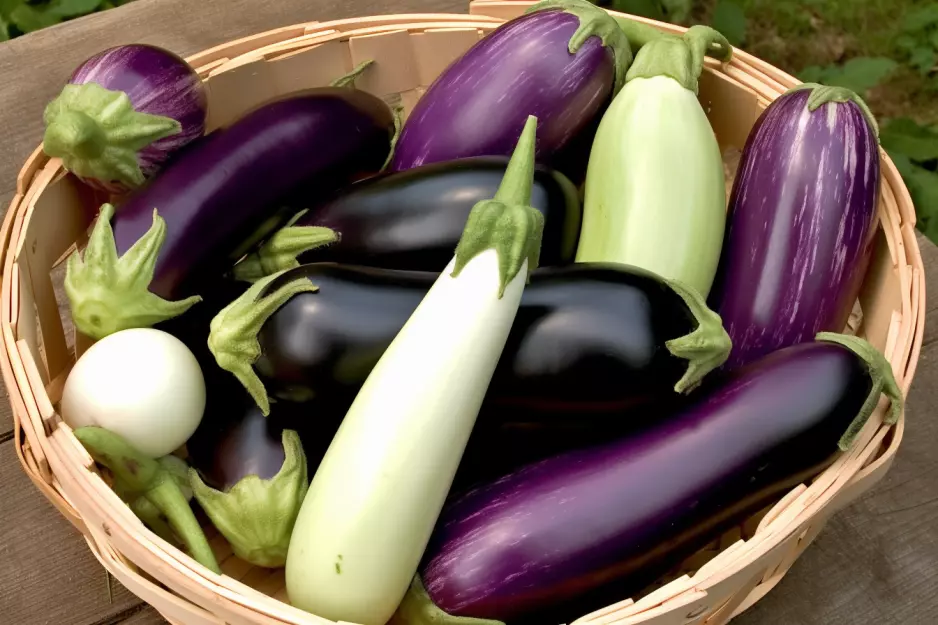While not as widespread, Fusarium wilt eggplant has similar symptoms as other tomato or pepper diseases. Symptoms like stunted growth, yellowing and decreased fruit-set rates will all be signs of a Fusarium infection in eggplant peperomia plants. Severe cases can lead to reductions or even the extinction of the plant.
Fusarium wilt is a plant disease that mainly affects eggplants during their growth phase, especially in young seedlings when they start growing vines and producing fruit. The initial signs include the base of the stem contracting, brown leaves, wilting, and drooping, which eventually leads to the collapse of the leaves.
Infected plants grow slowly, their lower leaves turn yellow, and they become more prone to wilting during the day. Some plants may recover partially in the mornings and evenings, but others may die within a few days.
Not all plants are affected, but those that are show specific symptoms. These include yellowing and browning of leaves, thickening of plant cell walls as a defense mechanism, and how deeply the fungus has invaded the plant’s vascular system determines the severity of the wilt.
Surviving plants often have stunted growth and smaller fruits. When the stem is wet, it may show discoloration and exhibit bright white to pink fungal growth containing spores called conidia, which spread the disease. The roots of diseased plants eventually turn dark brown and decay.

Eggplants can wilt due to the presence of the Fusarium oxysporum f. sp. niveum (FON) pathogen, which has four races (Race 0, 1, 2, and 3). FON is a highly aggressive fungal disease that primarily spreads through the soil. It infects the roots of eggplants, leading to wilting.
The pathogen can be transmitted through wind, water, animals, or humans. Poor soil conditions, such as heavy and poorly drained soil, hinder root growth and make plants more vulnerable to wilt disease.
Factors like temperature, humidity, variety resistance, seed quality, and soil management practices also contribute to the occurrence and severity of the disease. In summary, wilting eggplant caused by Fusarium wilt primarily spread through soil, and influenced by various environmental and agricultural factors.
The common chemical fungicides are Methomyl, Thiram, Iprodione and Thiophanate-methyl. The fungicides will help suppress the fungus in the early stages of growth, but they can easily cause pesticide residues which could be harmful to humans and animals. That’s why the use of the chemicals isn’t conducive to long-term large-scale production.

Trichoderma Harzianum can combat Fusarium in wilting eggplant by colonizing the roots. This will reduce crop damage, increase organic matter, and improve soil health. It also improves plant growth. Trianum Shield is made from organic materials to help control fusarium in wilting eggplant plants. Scientists used Bacillus subtilis bacteria to help trees fight off the harmful effects of Dutch elm disease.
The best way to control nematodes is to apply a fungicide to the soil around the base of the plant. This will kill any spores of the fungus that are present in the soil and prevent them from infecting the plant. Chemical control methods should be used as a last resort, as they can be harmful to both humans and the environment.

1.Wikipedia contributors. (2023, February 1). Fusarium wilt. In Wikipedia, The Free Encyclopedia. Retrieved 08:20, July 25, 2023.
2.Management of Fusarium wilt of Eggplant in Relation to Soil and Environmental Factors
As a plantation owner, I face quite a few..
The banana weevil, also known as Cosmopolites sordidus, is..
Fusarium wilt in banana is usually known to be..

Leave a Reply